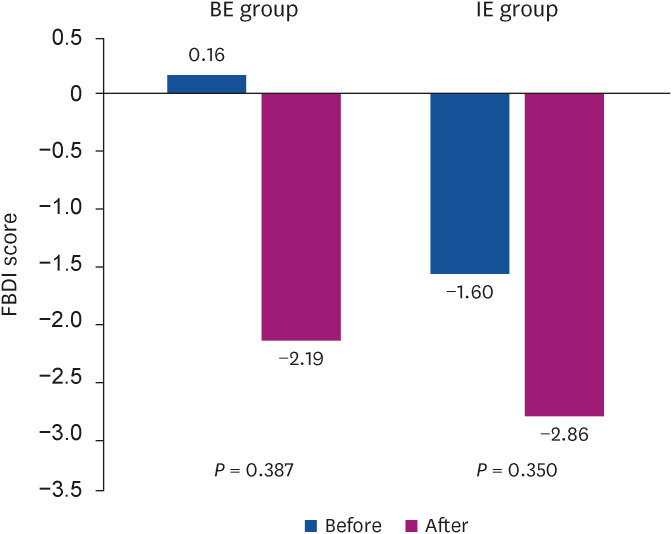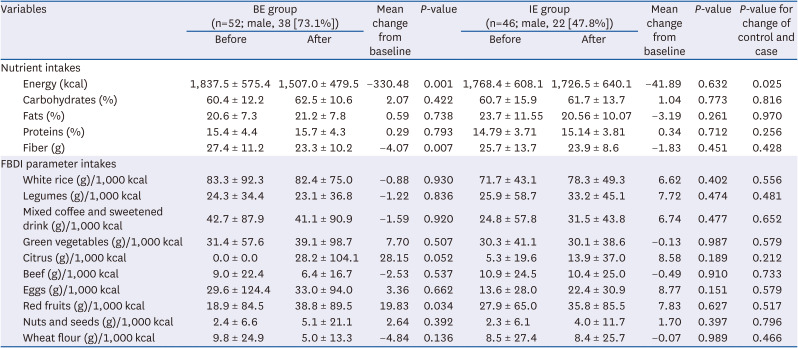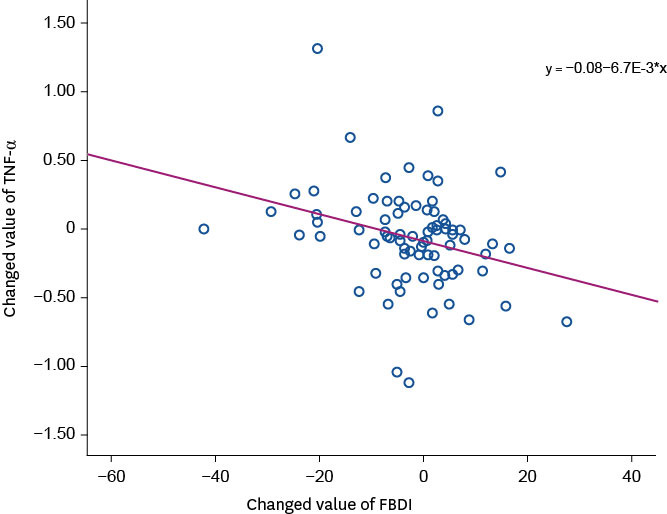1. Haslam DW, James WP. Obesity. Lancet. 2005; 366:1197–1209. PMID:
16198769.
2. Park IB, Baik SH. Epidemiologic characteristics of diabetes mellitus in Korea: Current status of diabetic patients using Korean health insurance database. Korean Diabetes J. 2009; 33:357–362.
3. Beck J, Greenwood DA, Blanton L, Bollinger ST, Butcher MK, Condon JE, Cypress M, Faulkner P, Fischl AH, Francis T, et al. 2017 National standards for diabetes self-management education and support. Diabetes Care. 2017; 40:1409–1419. PMID:
28754780.
4. American Diabetes Association. Lifestyle management: standards of medical care in diabetes—2019. Diabetes Care. 2019; 42(Suppl 1):S46–S60. PMID:
30559231.
5. Davies MJ, D’Alessio DA, Fradkin J, Kernan WN, Mathieu C, Mingrone G, Rossing P, Tsapas A, Wexler DJ, Buse JB. Management of hyperglycemia in type 2 diabetes, 2018. A consensus report by the American Diabetes Association (ADA) and the European Association for the Study of Diabetes (EASD). Diabetes Care. 2018; 41:2669–2701. PMID:
30291106.
6. Pawelec G, Goldeck D, Derhovanessian E. Inflammation, ageing and chronic disease. Curr Opin Immunol. 2014; 29:23–28. PMID:
24762450.
7. Giugliano D, Ceriello A, Esposito K. The effects of diet on inflammation: emphasis on the metabolic syndrome. J Am Coll Cardiol. 2006; 48:677–685. PMID:
16904534.
8. Tsalamandris S, Antonopoulos AS, Oikonomou E, Papamikroulis GA, Vogiatzi G, Papaioannou S, Deftereos S, Tousoulis D. The role of inflammation in diabetes: Current concepts and future perspectives. Eur Cardiol. 2019; 14:50–59. PMID:
31131037.
9. Shivappa N, Steck SE, Hurley TG, Hussey JR, Hébert JR. Designing and developing a literature-derived, population-based dietary inflammatory index. Public Health Nutr. 2014; 17:1689–1696. PMID:
23941862.
10. Mazidi M, Shivappa N, Wirth MD, Hebert JR, Vatanparast H, Kengne AP. The association between dietary inflammatory properties and bone mineral density and risk of fracture in US adults. Eur J Clin Nutr. 2017; 71:1273–1277. PMID:
29019343.
11. Ramallal R, Toledo E, Martínez-González MA, Hernández-Hernández A, García-Arellano A, Shivappa N, Hébert JR, Ruiz-Canela M. Dietary inflammatory index and incidence of cardiovascular disease in the SUN cohort. PLoS One. 2015; 10:e0135221. PMID:
26340022.
12. Denova-Gutiérrez E, Muñoz-Aguirre P, Shivappa N, Hébert JR, Tolentino-Mayo L, Batis C, Barquera S. Dietary inflammatory index and type 2 diabetes mellitus in adults: the diabetes mellitus survey of Mexico City. Nutrients. 2018; 10:385. PMID:
29561774.
13. Vahid F, Shivappa N, Faghfoori Z, Khodabakhshi A, Zayeri F, Hebert JR, Davoodi SH. Validation of a dietary inflammatory index (DII) and association with risk of gastric cancer: a case-control study. Asian Pac J Cancer Prev. 2018; 19:1471–1477. PMID:
29936717.
14. Na W, Yu TY, Sohn C. Development of a food-based index of dietary inflammatory potential for Koreans and its relationship with metabolic syndrome. Nutr Res Pract. 2019; 13:150–158. PMID:
30984359.
15. Cho YY, Lee MK, Jang HC, Rha MY, Kim JY, Park YM, Sohn CM. The clinical and cost effectiveness of medical nutrition therapy for patients with type 2 diabetes mellitus. J Nutr Health. 2008; 41:147–155.
16. Bouhaidar CM, DeShazo JP, Puri P, Gray P, Robins JL, Salyer J. Text messaging as adjunct to community-based weight management program. Comput Inform Nurs. 2013; 31:469–476. PMID:
24141325.
17. Kim JY, Oh S, Steinhubl S, Kim S, Bae WK, Han JS, Kim JH, Lee K, Kim MJ. Effectiveness of 6 months of tailored text message reminders for obese male participants in a worksite weight loss program: randomized controlled trial. JMIR Mhealth Uhealth. 2015; 3:e14. PMID:
25648325.
18. Livingstone KM, Celis-Morales C, Navas-Carretero S, San-Cristobal R, Macready AL, Fallaize R, Forster H, Woolhead C, O’Donovan CB, Marsaux CF, et al. Effect of an Internet-based, personalized nutrition randomized trial on dietary changes associated with the Mediterranean diet: the Food4Me Study. Am J Clin Nutr. 2016; 104:288–297. PMID:
27357094.
19. Mann S, Beedie C, Balducci S, Zanuso S, Allgrove J, Bertiato F, Jimenez A. Changes in insulin sensitivity in response to different modalities of exercise: a review of the evidence. Diabetes Metab Res Rev. 2014; 30:257–268. PMID:
24130081.
20. Bruunsgaard H. Physical activity and modulation of systemic low-level inflammation. J Leukoc Biol. 2005; 78:819–835. PMID:
16033812.
21. Pickup JC, Chusney GD, Thomas SM, Burt D. Plasma interleukin-6, tumour necrosis factor α and blood cytokine production in type 2 diabetes. Life Sci. 2000; 67:291–300. PMID:
10983873.
22. Dick SA, Epelman S. Chronic heart failure and inflammation: what do we really know? Circ Res. 2016; 119:159–176. PMID:
27340274.
23. Rexrode KM, Pradhan A, Manson JE, Buring JE, Ridker PM. Relationship of total and abdominal adiposity with CRP and IL-6 in women. Ann Epidemiol. 2003; 13:674–682. PMID:
14599731.
24. Forsythe LK, Wallace JM, Livingstone MB. Obesity and inflammation: the effects of weight loss. Nutr Res Rev. 2008; 21:117–133. PMID:
19087366.
25. Bianchi VE. Weight loss is a critical factor to reduce inflammation. Clin Nutr ESPEN. 2018; 28:21–35. PMID:
30390883.
26. Mirza S, Hossain M, Mathews C, Martinez P, Pino P, Gay JL, Rentfro A, McCormick JB, Fisher-Hoch SP. Type 2-diabetes is associated with elevated levels of TNF-alpha, IL-6 and adiponectin and low levels of leptin in a population of Mexican Americans: a cross-sectional study. Cytokine. 2012; 57:136–142. PMID:
22035595.
27. Wirth MD, Shivappa N, Khan S, Vyas S, Beresford L, Sofge J, Hébert JR. Impact of a 3-month anti-inflammatory dietary intervention focusing on watermelon on body habitus, inflammation, and metabolic markers: a pilot study. Nutr Metab Insights. 2020; 13:1178638819899398. PMID:
31975781.











 PDF
PDF Citation
Citation Print
Print




 XML Download
XML Download